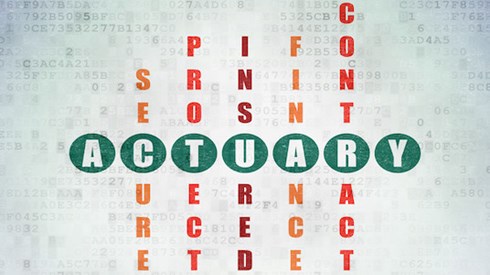Why Your Captive Insurance Company Board Needs To Be Actuarially Sound

July 27, 2020

A while back, I wrote an article on the need for captive insurance company boards to be financially numerate. Taking that argument one step further, in today's environment, it's imperative that your board, or at least a number of your board members, be actuarially sound.
Now, I will be the first one to admit that actuarial science is not an easy subject to understand. I'd probably even argue that it's less of a science and more of an art form. Have you ever known two actuaries to agree on anything? However, as markets harden, new risks proliferate, and captives look to survive and grow, the need to grasp the risk inherent in your own book of business is critical. This means at least being conversant enough with actuarial analysis to ask the important questions.
My interest in writing this article was piqued by two recent webinars by Pinnacle Actuarial Resources, Inc., on this subject matter—"Effective Communication Between Actuaries and Stakeholders" and "Actuarial 101 for Self-Insured Entities." I'm sure that most captive actuarial firms offer similar kinds of education. So, one of the best ways to begin educating your board is to ask your actuarial firm to conduct training like the information contained within the two Pinnacle presentations.
I had to chuckle when I looked through the Effective Communication slide deck. Early on, the audience was asked to respond to a multiple-choice question on how you would identify yourself: "A) Actuary, B) Non-actuary who works regularly with actuaries, C) Non-actuary who sometimes works with actuaries, or D) What's an actuary." While my guess is that answer "D" was meant to be tongue-in-cheek, the reality is many captive board members might only have a vague idea of what actuaries really do for their captive insurance company. For a concrete example of why that matters, look no further than the failure of Spirit Commercial Auto RRG. Here is a board that either didn't understand what their actuary was telling them or potentially did but failed to heed the analysis. The Pinnacle presentation uses a George Bernard Shaw quote that is very apropos: "The single biggest problem in communication is the illusion it's taken place."
Assuming, therefore, that you would like your board to become minimally conversant with actuarial analysis, where do you start? The second presentation by Pinnacle, "Actuarial 101 for Self-Insured Entities," provides a fairly good grounding. The actual presentation runs more than 60 slides, and we will not attempt to cover all of the material here. We will, however, provide a basic synopsis of the material to get the process started. However, as I previously mentioned, the best course of action would be to enlist your actuarial firm in providing a half-day training session.
If choosing to pursue this idea, make sure the presenters from the firm are comfortable in a training environment. I have known a great many actuaries in my career. While they all were, for the most part, extremely intelligent and gifted math/statistical professionals, not all of them would make good trainers. Actuarial science is quite technical, and the last thing you need when trying to help your board learn key concepts is a dry, highly detailed discussion that has half the audience asleep soon after it starts.
As for these key concepts, here are a number that every board member should grasp.1
- Accident Year—Data is based on accidents that occur within a twelve-month period. Thus, accident year 2020 is based on those accidents that occurred between January 1, 2020, and December 31, 2020.
- Actuarial Estimate—Estimate of future claim liabilities represented as an expected value over a range of reasonably possible outcomes.
- Adverse Selection—The conscious and deliberate selection of risks, segments of risk, or coverages that appear less attractive, with a higher chance of loss, than that contemplated by the applicable rate; the selection of such risks is adverse because the rate is inadequate; a tendency towards insuring risks possessing negative characteristics.
- Base Rates—A manual rate applied to a class of policies or to similar characteristics of a particular risk in a given territory or classification for a basic limit of liability; price per unit of insurance.
- Calendar Year—Data is more from an accounting perspective and contains information about each policy year. For example, policy years 1996–2016 could all have transactions going on in calendar year 2016, and that is what calendar year information is showing—many policy years with activity within 1 calendar year.
- Credibility—The relative confidence ascribed to historical loss experience; the value is usually expressed in terms of specific mathematical formulas and is a number between zero and one (100 percent); a measure of the predictive value attached to a particular body of data; a measure of statistical reliability, credence, or believability; as the body of experience increases in volume, the corresponding credibility also increases.
- Expected Loss Development—The predicted pattern of amounts paid in the full or partial settlement of claims.
- Experience—The loss record of an insured or of a class of coverage; classified statistics of events connected with insurance; the out-go or income, actual or estimated of what happened in the past; figures may be compiled on accident-year basis, calendar-year basis or policy-year basis; for underwriting purposes, the comparison of earned premium to incurred losses; the statistics related to the events connected with the assumption of risk.
- Exposure—Quantity used to measure relative level of risk; unit of loss potential; risk; chance of loss; healthcare professional liability is typically measured in number of occupied beds, outpatient visits, etc.
- Frequency—The number of claims (or occurrences) per exposure unit; sometimes incorrectly used to refer to the number of claims or occurrences; a relative, not an absolute, measure.
- Incurred But Not Yet Reported (IBNR)—The loss reserve value established in recognition of the total liability for future payments on losses which have occurred but have not yet been reported to the insurance company; expected future development on claims already reported; for claims-made coverage, the term IBNR represents the liability for unpaid claims that have been incurred and reported, but not fully developed.
- Loss Development—The difference between the estimated amount of loss initially reported and the amount of an evaluation of the same loss at a later date or the amount paid in final settlement.
- Policy Year—Data pertaining to all premiums and claims that arise from all of the policies issued during a 12-month period.
- Rate—The price per unit of insurance.
- Risk Margin—Provides for the risk of adverse deviation from expected losses; an amount to provide for the uncertainty in a reserve estimate.
- Trend Factors—Used to adjust the past loss experience to cost levels that will be expected during the projected period; includes the effect of inflation and other factors that may affect loss frequency (the number of claims per exposure) or severity (the average size of a claim); consideration that is given to past and prospective change in claims cost.
- Ultimate Net Loss—The total sum that the insurance company becomes obligated to pay either through adjudication or compromise, for litigation, settlement, adjustment, and investigation of claims and suits which are paid as a consequence of the insured loss, excluding only the salaries of the company's permanent employees.
The terms outlined above should be well understood by your board if they are to be considered actuarially sound. The easiest way of testing this question is to provide each of your board members with a copy of the terms and ask them to fill in their understanding of the definitions. This test will give management a good understanding of how well the board understands actuarial analysis.
- Glossary definitions courtesy of IRMI, Milliman, Pinnacle, and RMS
July 27, 2020




